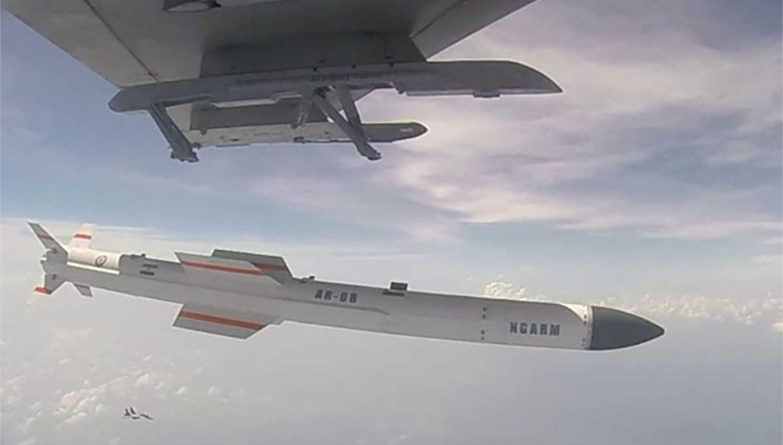India’s Rudram Missile
09 October 2020
India successfully test-fired Rudram 1, its first indigenous anti-radiation missile developed by the Defence Research and Development Organisation (DRDO) for the Indian Air Force, on Friday. A Sukhoi-30 fighter aircraft was used to test-fire the indigenously developed new generation anti-radiation missile (NGARM) off the country’s east coast
Rudram 1 can be integrated to IAF’s Sukhoi-30 jets and used as its launch platform. Rudram 1 can be used to detect and hone in on a radio source, according to defence website defenceupdate.in. This gives Rudram 1 the ability to detect enemy radars on the ground.
Once these missiles disarm enemy radars on the ground, it can help inflict more damage in the attacks that follow the first wave.
NGARM’s primary guidance system is an on-board passive homing head (PHH) armed with broadband capability. These features allow it to choose and select a target among the range of emitters that it sees at that point of time. The new NGARMs with PHH operates in the D-J band and can detect radio frequency emission from 100km away.
Rudram 1 is a target seeking missile and contains a radar dome which is critical for missiles which can be used to target and destroy enemy based radars on the ground. Rudram can strike any range between 100-250 km.
Defence minister Rajnath Singh congratulated IAF and DRDO for its successful test. “The New Generation Anti-Radiation Missile (Rudram-1) which is India’s first indigenous anti-radiation missile developed by DRDO for Indian Air Force was tested successfully today at ITR, Balasore. Congratulations to DRDO & other stakeholders for this remarkable achievement,” the defence minister said.
Courtesy: HT


